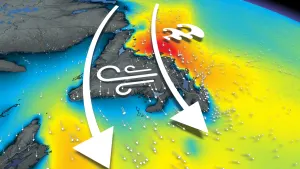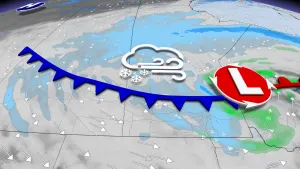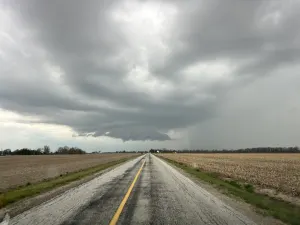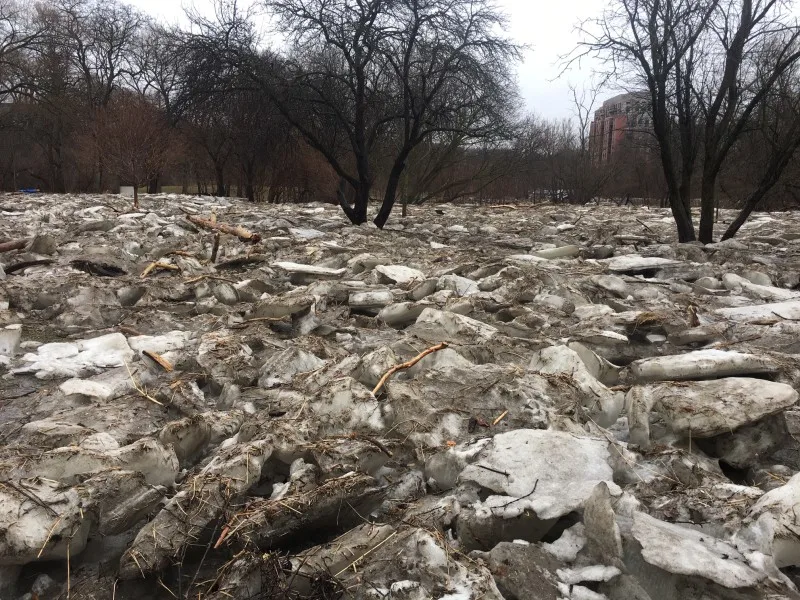
As winter fades, massive ice jams are a lingering hassle
Aside from flooding, ice jams leave behind fields of jagged, icy boulders
Rivers are going to do what rivers do, and only when we humans get in the way do bad things happen.
I would not classify what’s happened along the Humber River in Toronto's Étienne Brûlé Park as a disaster, but the ice jam that occurred in the late winter has created a huge mess that is going to need to be cleaned up. The ice will melt, the mud will dry up, but the sheer scale of the debris field is daunting.
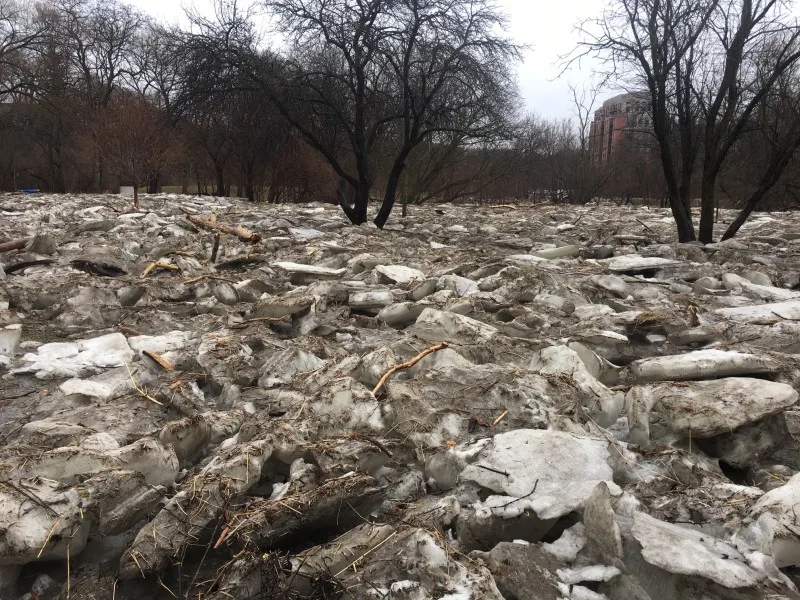
Ice jams and subsequent flooding are not new to the Humber River or any of the other major waterways in Ontario. These jams mostly happen during the spring as the ice breaks up during the normal melt cycle. As the ice is carried downriver, it can pile up anywhere there is an obstruction, or a tight bend, or a confluence. This isn’t a problem (and may in fact be a critical part of the riverine ecosystem), as long as there are no humans around.
However, on heavily managed rivers like the Humber, bridges and dams serve as ideal spots for jams to occur. When that happens, the flood that inevitably follows can vary from being a nuisance to being a big drain on a city’s work budget.
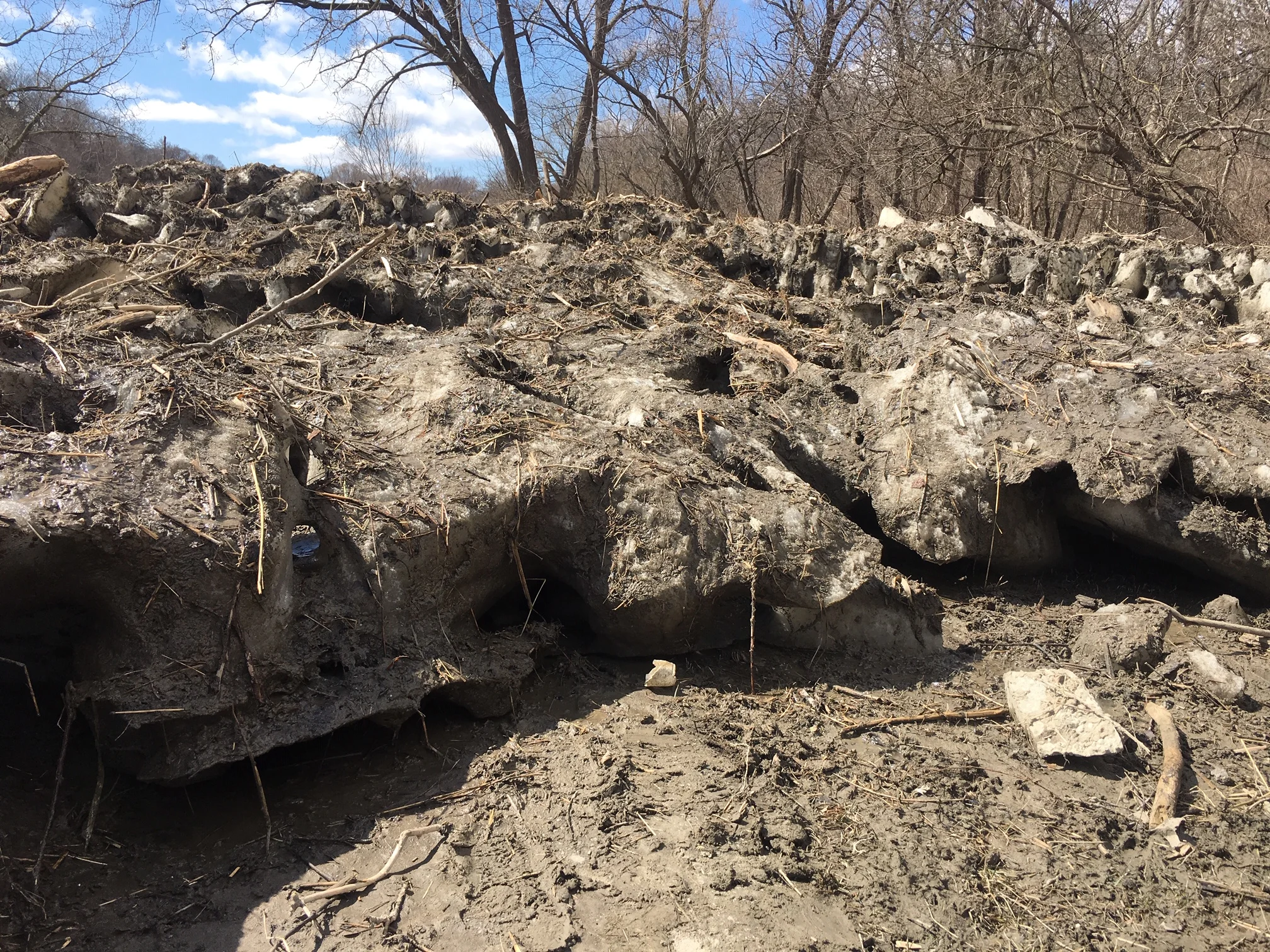
At Étienne Brûlé Park, a bridge and a quick, tight bend in the river ensure that ice jams are common here. This year, the ice jam was unusually large and the subsequent flood and ice debris pileup more extensive than usual. Some of the residents of the area told me they haven’t seen anything like it in many years.
I've been visiting the park for many years and I know it well. It usually takes about five minutes to walk from the Old Mill Bridge north to the park’s public washrooms. That same walk now takes about a half hour thanks to the jagged ice that sprawls across the grass and concrete walking paths. The washrooms themselves are mostly intact, but damage from the ice is evident on the stone walls.
As I picked my way across the ice, being careful to not step into one of the ubiquitous deep holes between the melting floes, the sheer amount of debris and garbage emerging from the ice surprised me. Where the ice had vanished thanks to the spring sun, a thick layer of mud many centimeters deep remained. Captured in the mud are old water bottles, bits of unidentifiable plastic, paper, even someone’s old backpack; a snapshot of city life caught in the medium of waterlogged dirt.

But it’s what’s in that dirt that you can’t see that worries me. How much of the dirt is polluted with heavy metals, or PCBs, or just the ever-present road salt that we throw on everything in the winter? Once the ice is gone and the mud remains, how will it all be dealt with properly? I’m pursuing answers to these questions now, but so far I’ve gotten no information from the City of Toronto.
So, for now, I watch as a mother and her son ride up to the edge of the field of ice, stop, get off their bikes and ogle the scale of the mess in front of them. They discuss something, pointing into the field of ice, and then slowly turn their bikes around and ride back the way they came, disappointed that their ride has been cut short.
Rivers do what they’re going to do.








